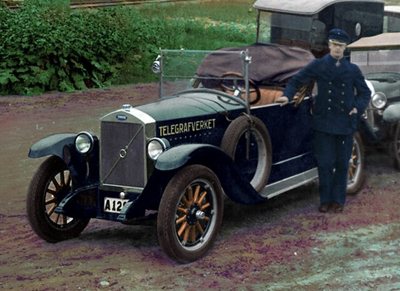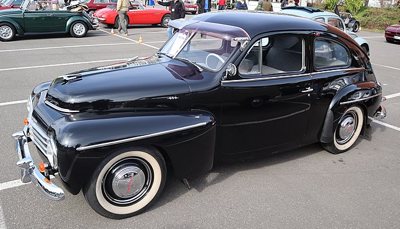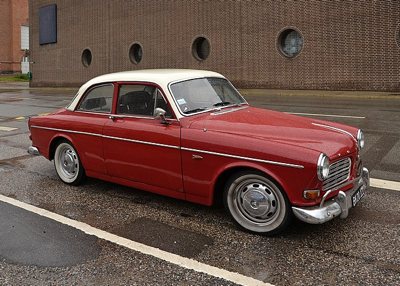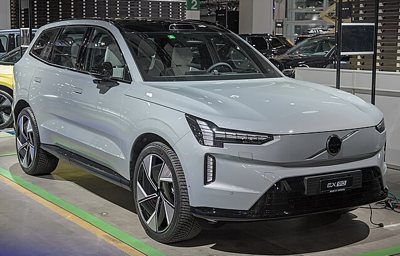Describing Volvo's history in the car industry is like describing your very smart friend who just wants everyone to enjoy the ride. Smart innovations, focus on practicality and safety have made Volvo one of the most recognized car manufacturers to date. And like a smart friend, Volvo is also looking forward to the future and keeping up with growing trends.
Who Owns Volvo Now?
A look at who currently owns Volvo…
Volvo is a publicly traded company so it is owned by multiple shareholders. The largest shareholders include Swedish investment groups and companies, while Geely Holding Group, a Chinese company, owns a significant stake of around 8.2% in Volvo.
It's worth noting that Volvo Group is a separate entity from Volvo Cars. Volvo Group focuses on commercial vehicles, construction equipment, and industrial engines, while Volvo Cars focuses on passenger cars.
Geely owns Volvo Cars, which was acquired from Ford Motor Company in 2010.
The Early Years
 Volvo was established in 1927 and immediately laid out the foundation of their design philosophy with their first vehicle - the Volvo ÖV 4. Built specifically for the cold environment of Sweden as well as its challenging terrain, it came with a 4-Cylinder Engine with 28 horsepower and maximum speed of 56 miles per hour. The car was measured at 185.4 inches long and 68.7 inches wide. It had three body types: the four-door Tourer, sedan and the two-door pick-up.
Volvo was established in 1927 and immediately laid out the foundation of their design philosophy with their first vehicle - the Volvo ÖV 4. Built specifically for the cold environment of Sweden as well as its challenging terrain, it came with a 4-Cylinder Engine with 28 horsepower and maximum speed of 56 miles per hour. The car was measured at 185.4 inches long and 68.7 inches wide. It had three body types: the four-door Tourer, sedan and the two-door pick-up.
Since the debut of the Volvo ÖV 4, the company continued to make vehicles for commercial purposes (taxicabs), luxury, and family rides. However, it was only in 1944 that Volvo really became a name in the car industry with the introduction of the Volvo PV444. Officially rolled out for public use in 1947, it immediately became a hit. The company's focus on safety is also apparent in this design, as it was the first car to feature a laminated windscreen.
To fully understand the safety advantage of the laminated windscreen, consider the dangers of traditional window glass. Window glasses break into sharp pieces that could easily harm people in an accident. Decapitation is even a possibility if the glasses are sharp enough. The use of laminated windscreen eliminated that safety risk altogether.
 Aside from its safety features, the Volvo PV444 is a sleek family car with 1.4L I4 engine that can reach a top speed of 90 mph. It's not the fastest vehicle on the road, but it's definitely one of the safest to drive. Surprisingly, it measured relatively smaller than Volvo's first car, at 173 inches long and 63 inches wide. The PV444 was replaced by PV544 with minimal changes most notably on its transmission (from three to four speed).
Aside from its safety features, the Volvo PV444 is a sleek family car with 1.4L I4 engine that can reach a top speed of 90 mph. It's not the fastest vehicle on the road, but it's definitely one of the safest to drive. Surprisingly, it measured relatively smaller than Volvo's first car, at 173 inches long and 63 inches wide. The PV444 was replaced by PV544 with minimal changes most notably on its transmission (from three to four speed).
While the PV444 was considered historic in its own right when it comes to safety, the Volvo Amazon (introduced in 1956) is the epitome of the evolution of safe riding. At that time, companies around the world were aware of the need for safety measures in their vehicles, and the common seatbelt used was the two-point seatbelt, similar to those used in airplanes. It provided some sort of safety measure but cars are not the same as airplanes.
 The Volvo Amazon changed the game altogether with the use of the three-point seatbelts. With full body protection, everyone is protected from serious accidents. It's even more impressive because Volvo did not patent this design - helping the world to be a safer place without the need for any type of compensation. The Volvo Amazon measured 181 inches in length and 66 inches in width, and was available with 1.6L or 2.0L I4 engines, producing up to 120 horsepower and a maximum speed of 100 mph. Because of its speed, the Volvo Amazon was also a common sight at rally races all over Europe.
The Volvo Amazon changed the game altogether with the use of the three-point seatbelts. With full body protection, everyone is protected from serious accidents. It's even more impressive because Volvo did not patent this design - helping the world to be a safer place without the need for any type of compensation. The Volvo Amazon measured 181 inches in length and 66 inches in width, and was available with 1.6L or 2.0L I4 engines, producing up to 120 horsepower and a maximum speed of 100 mph. Because of its speed, the Volvo Amazon was also a common sight at rally races all over Europe.
Volvo 240 - Built To Last
 If there's one vehicle that perfectly describes what a Volvo is, it's the Volvo 240. Introduced in 1974, it's now considered one of the toughest vehicles ever. Design-wise, there's nothing to write home about this vehicle because it's a straightforward box-type car with four-doors and seats four as its basic design. It measures 190 inches in length and 67 inches in width. The Volvo 240 came in I4 or V6 engine with top speed of up to 120 mph for their turbo version.
If there's one vehicle that perfectly describes what a Volvo is, it's the Volvo 240. Introduced in 1974, it's now considered one of the toughest vehicles ever. Design-wise, there's nothing to write home about this vehicle because it's a straightforward box-type car with four-doors and seats four as its basic design. It measures 190 inches in length and 67 inches in width. The Volvo 240 came in I4 or V6 engine with top speed of up to 120 mph for their turbo version.
But the beauty of Volvo 240 is not in its design or engine. It's a highly regarded vehicle because it's practical and incredibly durable. Even though this model was discontinued in 1993, there are still 240s on the road that work like it was built a couple of years ago.
Volvo EX90 - Fully Electric SUV
 While the Volvo 240 is your classic vehicle that seems to last forever, Volvo is also looking into the future while taking full advantage of today's technology. The Volvo EX90 is a fully electric SUV introduced in 2024. It comes with an AWD Dual Electric Motor boasting 496 horsepower that gives this vehicle a top speed of 112 mph. The SUV is 198 inches long and 78 inches wide and it uses AI technology to keep you safe on the road. It's also a dual charging SUV which means it can become a power source in case of emergency.
While the Volvo 240 is your classic vehicle that seems to last forever, Volvo is also looking into the future while taking full advantage of today's technology. The Volvo EX90 is a fully electric SUV introduced in 2024. It comes with an AWD Dual Electric Motor boasting 496 horsepower that gives this vehicle a top speed of 112 mph. The SUV is 198 inches long and 78 inches wide and it uses AI technology to keep you safe on the road. It's also a dual charging SUV which means it can become a power source in case of emergency.
The Volvo ES90
Volvo's latest car is the fully electric sedan that's set to revolutionize the automotive industry - the Volvo ES90.

It is a large electric car that measures 196.9 inches in length and 76.5 inches in width when the mirrors are folded. It has a wheelbase of 122 inches.
Volvo Car Sizes
Volvo's car sizes have evolved significantly since its first model, the ÖV 4 (1927), measuring 185.4 inches in length and 68.7 inches in width. The PV444 (1947) was slightly smaller, while the Amazon (1956) and 240 (1974) were larger. Modern Volvo cars, like the XC90 (2002) and S90 (2016), offer more space and comfort. The latest models, such as the ES90 (2025) showcase a balance between size, sustainability, and innovative design.
Future Vision
Volvo's future vision for cars includes safety, sustainability, and innovation. Volvo plans to become a fully electric car company by 2030, with a goal of having 50% of its global sales consist of fully electric cars by 2025
Conclusion
From the Volvo ÖV 4 to ES90, the company continues to push for innovations in favor of their customers' safety and comfort. By sharing their safety technology and leveraging available advancements, Volvo has made vehicles both fun and safe to ride for everyone.
